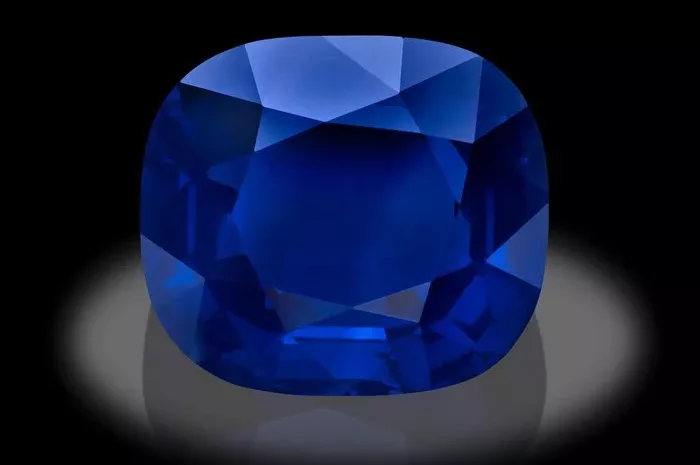Tanzanite is a mesmerizing gemstone known for its striking blue to violet-blue color and rarity. Discovered relatively recently in the 1960s, tanzanite has quickly become a highly sought-after gemstone prized for its beauty and unique coloration. However, many people are unfamiliar with what raw tanzanite looks like in its natural state. In this article, we will explore the appearance of raw tanzanite, including its color, clarity, and crystalline structure, to provide a better understanding of this captivating gemstone.
Understanding Tanzanite
Tanzanite is a variety of the mineral zoisite, which belongs to the epidote mineral group. It was first discovered in the Merelani Hills of Tanzania, East Africa, making it one of the world’s rarest gemstones. Tanzanite’s distinctive blue to violet-blue color is caused by the presence of vanadium and chromium impurities within the crystal structure. The intensity of the color can vary depending on the amount of these impurities present.
Tanzanite is relatively soft compared to other gemstones, with a hardness of 6 to 7 on the Mohs scale. This makes it susceptible to scratching and abrasion, so care must be taken when handling and wearing tanzanite jewelry.
In its natural state, tanzanite is typically found as rough, uncut crystals that are faceted and polished to enhance their beauty and brilliance. Raw tanzanite crystals can vary in size, shape, and color, with each specimen exhibiting its own unique characteristics.
What Does Raw Tanzanite Look Like
Raw tanzanite crystals exhibit a range of colors and clarity characteristics, depending on factors such as geological conditions, mineral composition, and formation processes. Here are some key features of raw tanzanite:
Color: Raw tanzanite crystals can display a variety of colors ranging from pale blue to deep violet-blue. The color intensity may vary within individual crystals, with some sections appearing lighter or darker than others. In some cases, raw tanzanite crystals may exhibit zoning, where different color bands are visible within the crystal structure.
Clarity: The clarity of raw tanzanite crystals can vary from transparent to translucent, with some specimens exhibiting visible inclusions or internal flaws. Inclusions are natural imperfections that form during the crystal’s growth process and can include mineral deposits, fractures, and other irregularities. While some inclusions may detract from the overall clarity of the crystal, they are also indicative of its natural origin and authenticity.
Shape and Structure: Raw tanzanite crystals can take on a variety of shapes and structures, ranging from elongated prismatic crystals to blocky, tabular formations. The crystal structure of tanzanite is typically orthorhombic, with well-defined faces and edges. Tanzanite crystals may exhibit striations, ridges, and other surface features that are characteristic of their growth patterns.
Luster: The luster of raw tanzanite crystals can range from vitreous to pearly, depending on factors such as surface texture and light reflection. Some specimens may exhibit a high-gloss shine, while others may have a more subdued or matte appearance.
Size: Raw tanzanite crystals can vary significantly in size, from small, thumbnail-sized specimens to large, museum-quality crystals. The size of the crystal can influence its value and rarity, with larger crystals typically commanding higher prices.
Where to Find Raw Tanzanite
Raw tanzanite crystals are primarily found in the Merelani Hills of Tanzania, East Africa, where they are mined from underground deposits. The mining process involves extracting the crystals from the surrounding rock and soil, followed by sorting, cleaning, and grading to prepare them for sale or further processing.
In addition to Tanzania, tanzanite has also been found in small quantities in other regions of the world, including Kenya, Madagascar, and Pakistan. However, Tanzanian tanzanite is considered the most desirable and valuable due to its exceptional color and clarity.
Uses of Raw Tanzanite
Raw tanzanite crystals are highly prized by collectors, lapidaries, and jewelry designers for their rarity and beauty. Some collectors seek out raw tanzanite specimens for their natural aesthetics and unique color variations, while others use them as investment pieces or display specimens.
Lapidaries and jewelry designers often purchase raw tanzanite crystals to cut and polish into faceted gemstones for use in fine jewelry. Tanzanite gemstones are commonly set into rings, earrings, necklaces, and bracelets, where their vibrant color and brilliance can be showcased and admired.
Conclusion
Raw tanzanite crystals are prized for their unique color, clarity, and beauty. From pale blue to deep violet-blue hues, each raw tanzanite crystal is a testament to the natural wonders of the Earth. Whether you’re a collector, lapidary, or jewelry enthusiast, raw tanzanite crystals offer a glimpse into the fascinating world of gemstones and their incredible diversity. With their captivating color and natural elegance, raw tanzanite crystals are sure to captivate and inspire for generations to come.


